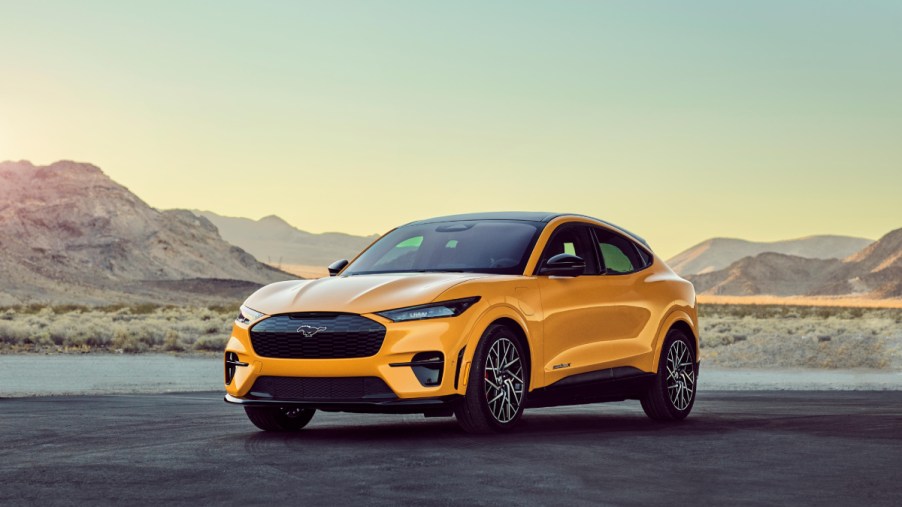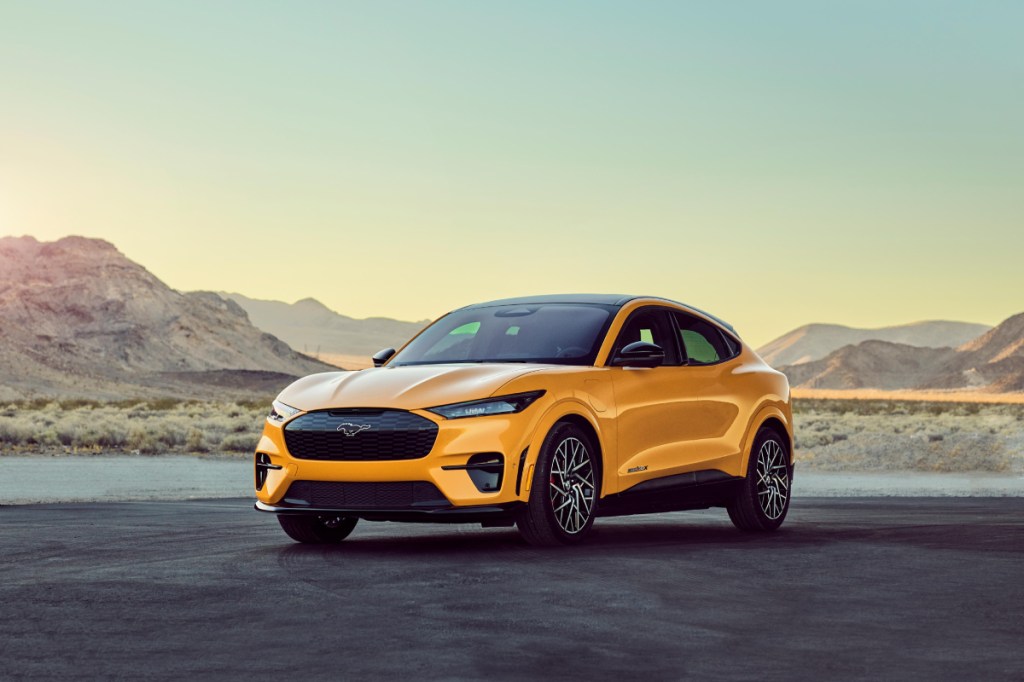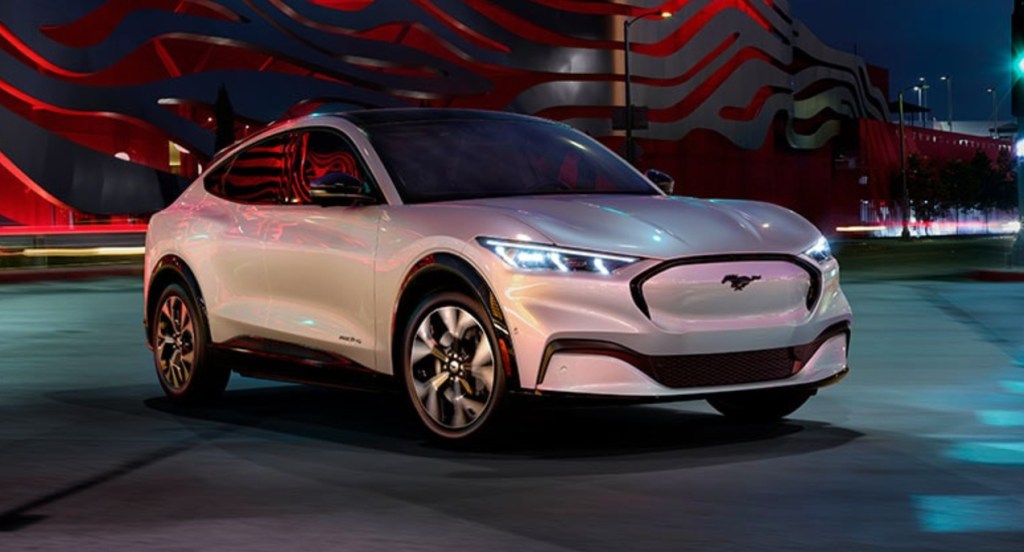
Watch the Embarrassed Ford Mustang Mach-E Fail the Moose Test
Oh goodness, you can watch the 2021 Ford Mustang Mach-E fail the Moose test. Rivals such as the Tesla Model X have passed this test. So, why did the Ford Mustang Mach-E fail? Also, what the heck is the Moose Test?
Watch the 2021 Ford Mustang Mach-E fail the Moose Test

While the 2021 Ford Mustang Mach-E has been achieving great things, it isn’t a winner across the board. This SUV passed the Michigan State Police test and won the Eco-Friendly Car of the Year award. However, it failed the Moose test.
But what is the Moose test? The Moose test comes from Sweden, and it’s an evasive maneuver test. In Scandinavia and other areas such as Finland, people often get hurt when hitting a moose or other animals that suddenly cross into the road.
So, basically, the test is used to assess how well a vehicle can avoid collisions when obstacles such as a moose suddenly appear while traveling at high speeds. The vehicle’s handling, stability, and tire adhesion are put to the test. Because if a moose gets in the way, the best course of action is to avoid hitting it.
How would the Mustang Mach-E pass the Moose test?
The Ford Mustang Mach-E had to meet a few different conditions to pass the test. It needed to be traveling at the average speed of 62 mpg or 100 km/h. Then it needed to start braking in time to avoid the accident.
62 mph is the average speed that vehicles travel on country roads, and it’s the most common speed at which vehicles hit an animal.
Then the vehicle’s suspension, shock absorbers, springs, and stabilizers are judged on how quickly they can adjust to avoid hitting the animal. This involves having a composed ride and responsive handling to go around the moose.
The 2021 Mustang Mach-E needed to change lanes about two meters ahead of the animals and then return to its lane. If there is no drifting or skidding, then the vehicle passes the test. The test is performed on an asphalt track in dry weather, and the car is fully loaded with passengers on board.
Why did the 2021 Mustang Mach-E fail?

The 2021 Ford Mustang Mach-E came in last place. Other electric vehicles such as the Hyundai Ioniq 5 and Tesla Model Y proved to have a better ability to maneuver around obstacles at high speeds.
Unfortunately, Mustang Mach-E failed the test while traveling at 44.7 miles per hour. This is disappointing because 62 mph is the average speed for the Moose test. Testers mentioned that the rear end of the Mach-E seemed to be unstable.
Ultimately, the Mach-E struggled with slow steering and a soft chassis. The electronic stability control system also was slow to respond. The Mustang Mach-E hit a lot of cones, which represent going off-road. All of its competitors were able to complete the test without hitting the cones.
The Ford Mustang Mach-E apparently needs a little suspension tuning before it can avoid a moose. We’re sure that Ford is working on enhancing this SUV, but we will keep you updated as we learn more.



